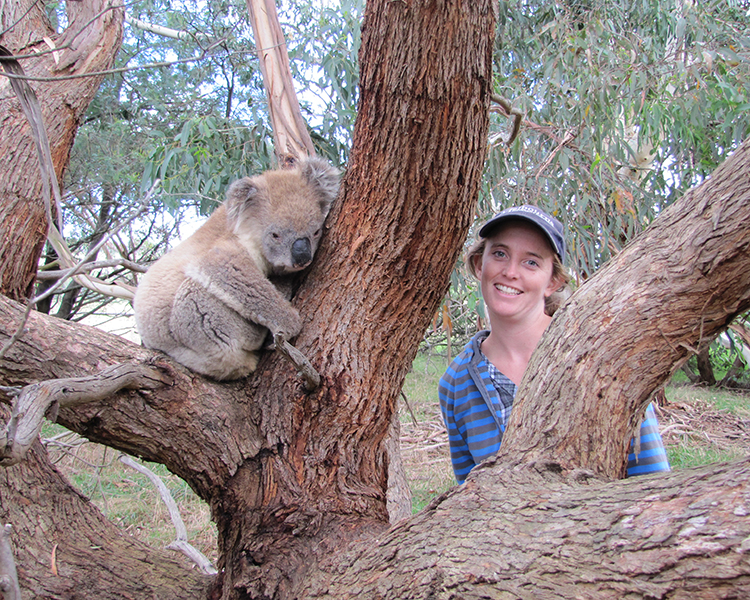
Researcher Profile: Natalie Briscoe
Tuesday, 13 February 2018Dr Natalie Briscoe’s fascination with wildlife goes right back to her early childhood. Living in the foothills of the Dandenong Ranges outside of Melbourne, she was surrounded by bush and inspired by how animals were adapted to different environments, often coping with adverse conditions. And this fascination led to a career in analysing what it takes for a species to persist in a changing climate, and how this understanding helps identify what they need as refuge.
I was very fortunate in my early life. I lived in a wonderful bush setting and had a wonderful biology teacher in high school. She channelled my natural curiosity about wildlife into a more scientific way of thinking. I was particularly interested by how different animals managed to make a living in so many different ways, across such diverse environments.
At university, I pursued these interests with a major in zoology, alongside politics. This strange sounding combination proved valuable. Not only did I learn about the ecology of different species’ and systems – but I also gained insight into how different societies function, and the drivers of many of the stressors on wildlife. I was particularly struck by the challenge of conserving biodiversity in the face of climate change, in highly modified landscapes. I began to appreciate that to manage species we need to understand their resource needs and what limits their survival.
My research has combined my curiosity for understanding how animals ‘make a living’ in their environment, with the desire to apply this knowledge to better protect them. I spent my PhD researching how koalas will be affected by climate change. I collected data on their physical traits and physiology, as well as how they behave in different weather. I then used this information to build a model that predicts how much energy and water koalas need to live in a particular place, based on the climate at that location. Using this model, we were able to predict which areas are likely to remain suitable for the koalas in the future – thereby identifying priorities for protection.
Along the way, I also learnt a lot about how koalas cope with the diverse range of environments they live in. In south-eastern Australia, for example, koalas cool down by hugging cool tree trunks during hot weather. It turns out that this behaviour is really effective at helping them cope with temperature extremes, when water is scarce. As a scientist, I love uncovering new information like this. But it can also help us protect koala populations, highlighting the importance of trees that provide cool tree trunks and deep shade, alongside trees they feed on.
One of the best things about my job is that I work with a broad range of people who have incredible knowledge about the ecology of different species and systems, and a passion for making a difference. As part of my current work for the TSR Hub identifying and managing refuges from threats, I’m working with land managers, field ecologists, hydrologists, as well as experts in modelling and animal physiology. Together we’re trying to identify strategies to reduce the impact of disease on threatened frogs, as well as understand what feral predators need to survive in different environments, so that we can better target management.
Top image: Natalie Briscoe has always been fascinated by how animals live where they do. But what does this mean when the conditions where they live change. How do animals like koalas cope with climate change in (already) heavily modified forests and woodlands? What environmental elements would provide them refuge in the future when extreme weather conditions are forecast to be more frequent? Photo: Greta Frankham